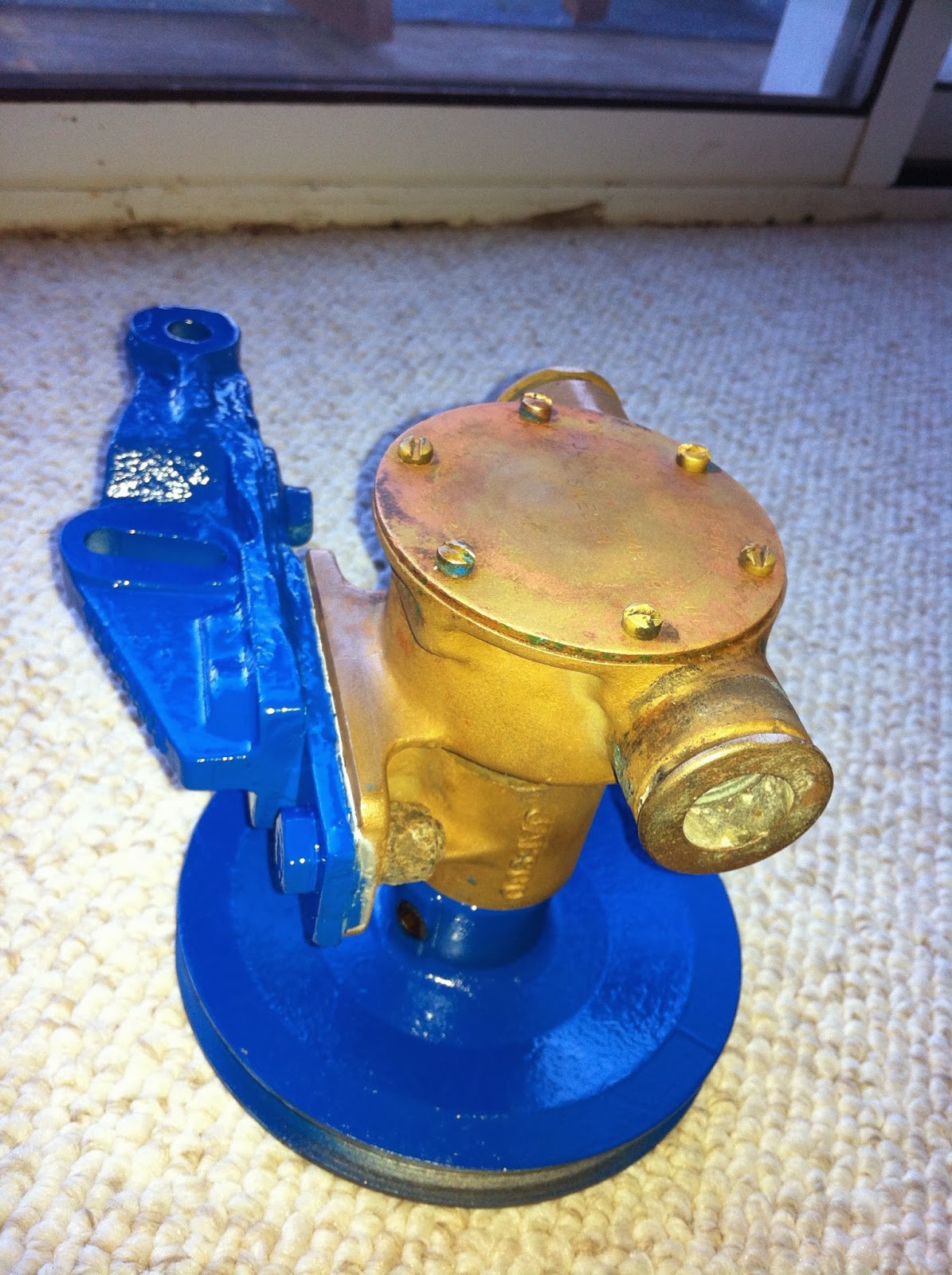Pump Removal
- Tools: 1/2" socket for bolt in slot, 5/8" socket for pivot bolt, plus box wrenches for backers, screw driver for hose clamps, multiple lights.
- Loosened hose clamps and removed hoses to gain better access.
- Bolts attaching the pump to the bracket couldn't be influenced in the tiny space, so I removed the bracket with the pump instead.
- The belt can't be slipped off of the pump until the bolts are completely removed so the pump can be rotated.
Pump Servicing
- It appears that the pump doesn't line up with the OEM bracket so an offset bracket had been created. It appears to have been corroded in place, hence it couldn't easily be separated from the pump or bracket. Since no replacement exists and removal would be destructive, it was decided to leave it in place. It will be cleaned up as best as possible and painted.
- The hose elbows show signs of deterioration and need to be replaced. One side attached to the 1-1/4"OD pump and the other to the xxx OD pipe. Unable to source locally.
- Pump body says "Jabsco" while the cover says Johnson. Existing impeller is a Jabsco xxxxx-xxx. In and outs are 3/4" and oppose each other. They have a "bead insert" screwed into them. Shaft is 1/2" OD.
- Removed the cover. The impeller is missing a chunk and the gasket was nearly non-existent. (Broker told me that the cover had been removed and an inspection showed no issues.)
- Wire brushed everything.
- Couldn't loosen pulley set screw even after soaking with WD-40. Local mechaic was able to remove it with some heat.
- Tom Gunther (Gunther Marine Engines) took pump apart and replaced impeller, one seal, screws and gasket with the spares I provided. He sandblasted body and re-assembled. ($85).
- The pump looked great, so I left it unpainted and just painted the bracket. Used multiple coats of engine primer paint and then multiple coats of Lt Ford Blue engine paint.
Pump Re-installation
Followup


